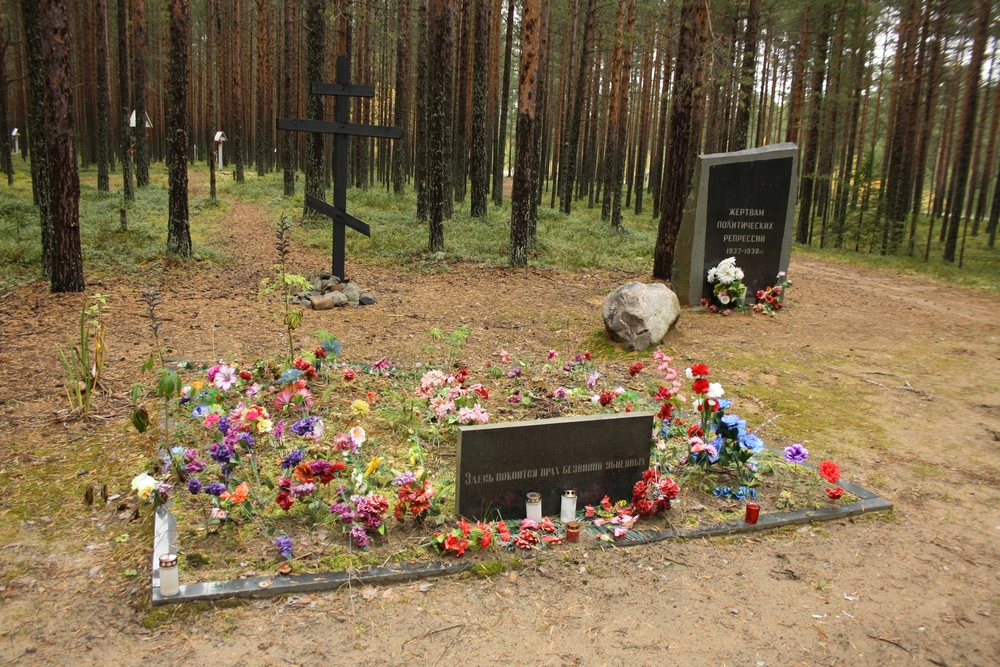Krasny Bor is a wooded area near Petrozavodsk, the capital of Karelia in Northwest Russia. As with Krasnaya ploshchad (Красная площадь) in Moscow — today known in English as Red Square but with a name originating, from earlier Russian usage, as the “Handsome” or “Beautiful” Square — Krasny Bor means the “Beautiful (or Handsome) Grove”.
The Karelian instance of this common Russian name has become widely known, thanks to the efforts of Yury DMITRIEV and others, as The Grove Stained Red with Blood (2000), one of Stalin’s killing fields of the late 1930s.
Identifying the buried victims
In 1997 an NKVD killing field and burial place during Stalin’s Great Terror was identified at Krasny Bor, and then thoroughly investigated by the historian Yury Dmitriev, the head of Memorial in Karelia.
The burial site covers an area of approximately 350 by 150 metres. According to execution reports in the former KGB archives, 1,193 people were executed and buried there: 580 Finns, 432 Karelians, 136 Russians and 48 persons of other nationalities. The shootings took place from 9 August to 15 September 1937 and from 26 September to 2 October 1938.
In an interview with Dmitriev recorded in May 2015 he said that the identity of almost all those shot at Krasny Bor had been established with a high degree of certainty. For comparison, roughly half of those shot at Sandarmokh have been identified.
A Place of Remembrance
On 31 October 1998, the memorial cemetery Krasny Bor was opened, a companion site to the large and growing complex at Sandarmokh. A Day of Remembrance is marked each year at Krasny Bor on 30 October, the traditional Political Prisoner’s Day in the USSR.

The memorial stone in the foreground reads, “Here lie the remains of the innocent slain”
The text on the larger monument in the background is “To the victims of political repression, 1937-1938”
(Photo from the Virtual Museum of the Gulag)
On 12 October 2017 three Moscow writers (Ludmila Ulitskaya, Olga Drobot and Marina Vishnevetskaya) visited Krasny Bor after joining other supporters of Yury Dmitriev that morning in the corridor of the Petrozavodsk courthouse where his trial continued in closed session.
A Contested Legacy?
In 2017, in the absence of Yury Dmitriev, then imprisoned in Petrozavodsk at Detention Centre No 1, the annual Day of Remembrance took a different form — an official part, with dancing and singing; and an “unofficial” protest during which Dmitriev’s daughter Katerina and others read aloud the names of the hundreds of victims from the lists compiled by her father.
- See Krasny Bor entry [R], Virtual Museum of the Gulag
- 12 October 2017, Moscow writers visit Krasny Bor (7×7) [R]
- 27 October 2017, In Detention Centre No 1, Dmitriev letter
- 31 October 2017, The Day of Remembrance in Petrozavodsk (7×7)